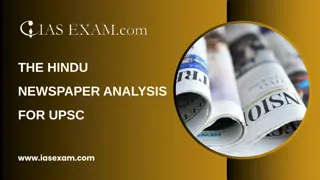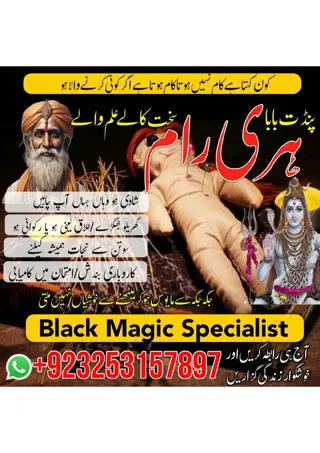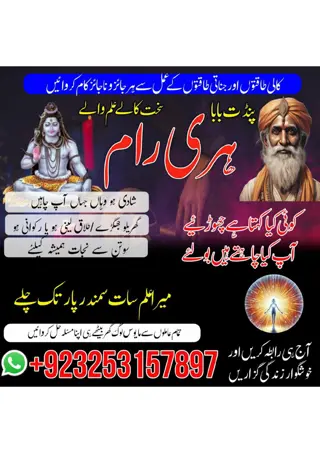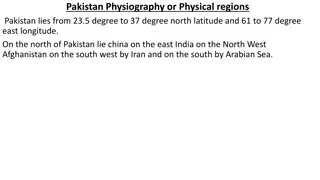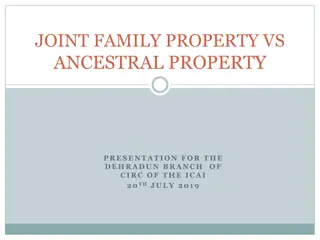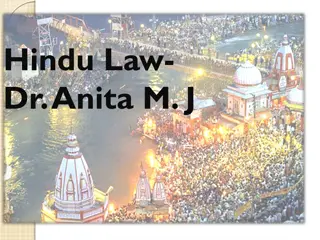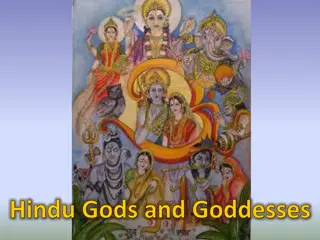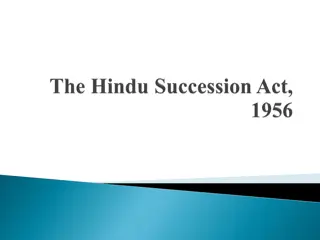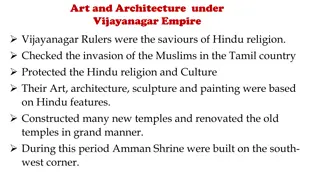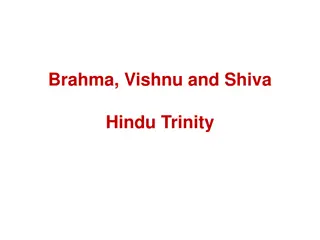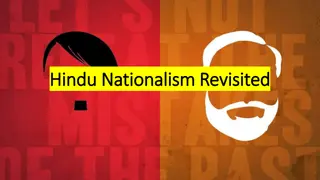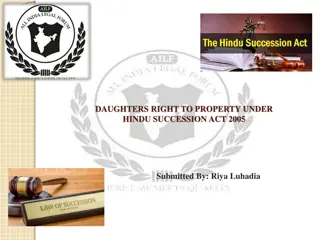The All India Hindu Mahasabha: History and Impact
The All India Hindu Mahasabha is a right-wing Hindu nationalist political party in India formed to protect Hindu community rights. Despite being old, it has had marginal influence on politics. The Mahasabha emphasized Hindu solidarity and social reform, founded in the early 1900s by leaders like Pandit Madan Mohan Malaviya and Lala Lajpat Rai. In the late 1920s, leaders like Vinayak Damodar Savarkar shaped its ideologies, leading to conflicts with Congress and the rise of competitors like the Rashtriya Swayamsevak Sangh.
Download Presentation

Please find below an Image/Link to download the presentation.
The content on the website is provided AS IS for your information and personal use only. It may not be sold, licensed, or shared on other websites without obtaining consent from the author.If you encounter any issues during the download, it is possible that the publisher has removed the file from their server.
You are allowed to download the files provided on this website for personal or commercial use, subject to the condition that they are used lawfully. All files are the property of their respective owners.
The content on the website is provided AS IS for your information and personal use only. It may not be sold, licensed, or shared on other websites without obtaining consent from the author.
E N D
Presentation Transcript
THE ALL INDIA HINDU MAHASABHA AND THE RSS SEM-IV,CC-X DEBABRATA NANDI
HINDU MAHASABHA The Hindu Mahasabha (officially Akhil Bh rat Hind Mah sabh or All-India Hindu Grand- Assembly) is a right wing Hindu nationalist political party in India. The organisation was formed to protect the rights of the Hindu community in British India, after the formation of the All India Muslim League in 1906[3]and the British India government's creation of separate Muslim electorate under the Morley-Minto reforms of 1909. Although quite an old Hindu nationalist political party, the Hindu Mahasabha has remained marginal in its influence on Indian politics, both before and after independence.
Preparatory sessions of the All India Hindu Sabha were held at Haridwar (13 February 1915), Lucknow (17 February 1915) and Delhi (27 February 1915). In April 1915, Sarvadeshak (All India) Hindu Sabha was formed as an umbrella organisation of regional Hindu Sabhas, at the Kumbh Mela in Haridwar. Gandhi and Swami Shraddhanand were also present at the conference, and were supportive of the formation of All India Hindu Sabha. The Sabha laid emphasis on Hindu solidarity and the need for social reform.
Amongst the Mahasabha's early leaders was the prominent nationalist and educationalist Pandit Madan Mohan Malaviya, who founded the Benaras Hindu University, and the Punjabi populist Lala Lajpat Rai. Under Malaviya, the Mahasabha campaigned for Hindu political unity, for the education and economic development of Hindus as well as for the conversion of Muslims to Hinduism
In the late 1920s, the Mahasabha came under the influence of leaders like Balakrishna Shivram Moonje and Vinayak Damodar Savarkar. Savarkar was a former revolutionary who had been banned from anti-British political activities and opposed the secularism of the Congress. Under Savarkar, the Mahasabha became a more intense critic of the Congress and its policy of wooing Muslim support. The Mahasabha suffered a setback when in 1925, its former member Keshav Baliram Hedgewar left to form the Rashtriya Swayamsevak Sangh, a Hindu volunteer organisation that abstained from active politics. Although ideologically similar to the Mahasabha, the RSS grew faster across the nation and became a competitor for the core constituency of the Mahasabha.
Rashtriya Swayamsevak Sangh, abbreviated as RSS (R r ya Svayams vaka Sa gha, "National Patriotic Organisation), is an Indian right-wing, Hindu nationalist, paramilitary volunteer organisation that is widely regarded as the parent organisation of the ruling party of India, the Bharatiya Janata Party. The RSS is one of the principal organizations of the Sangh Parivar group. Founded on 27 September 1925, by Keshav Baliram Hedgewar. it claimed a commitment to selfless service to India. The organisation is the world's largest voluntary missionary organization. RSS(Rashtriya Swayamsevak Sangh)





